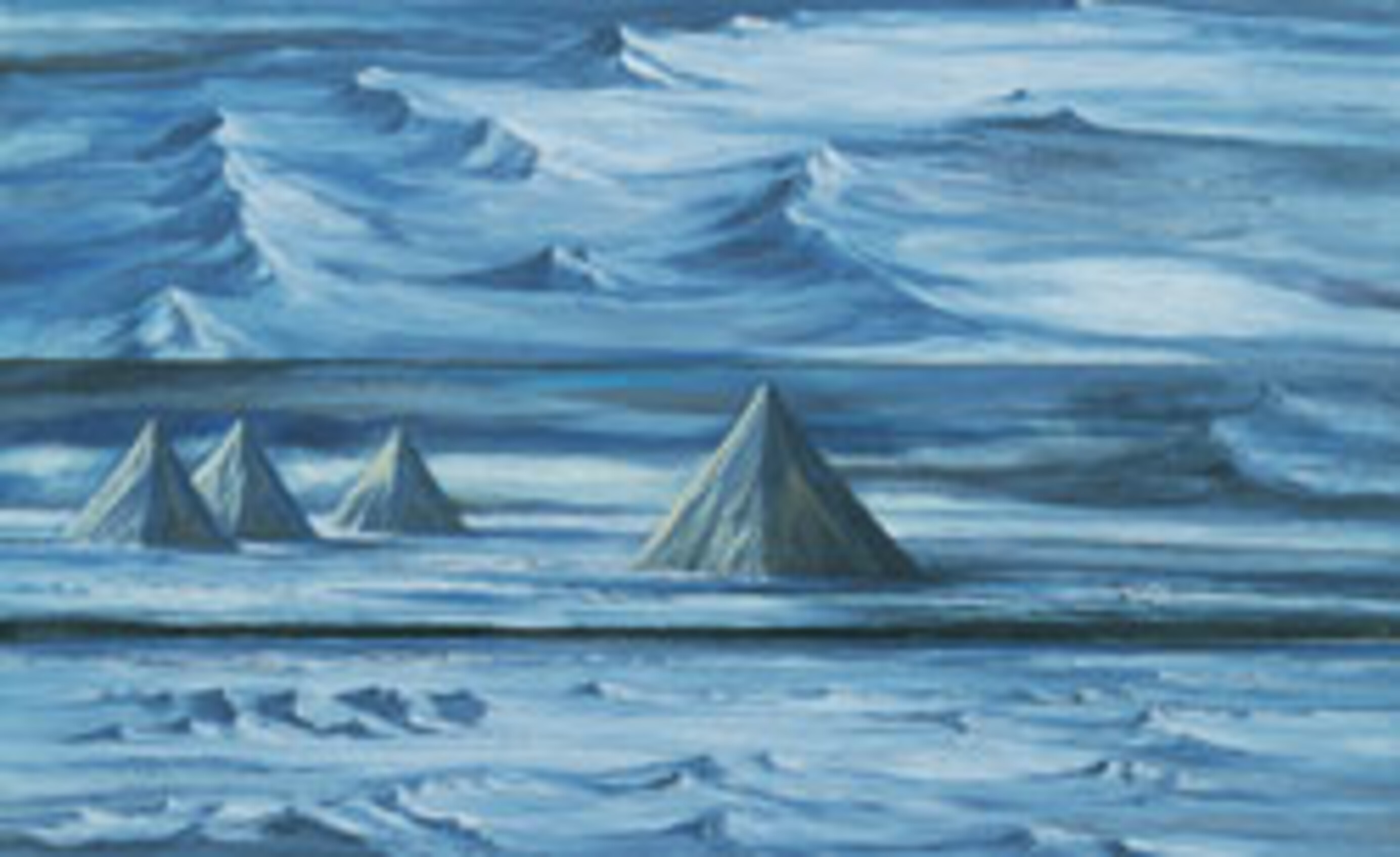This exhibition is now closed
Margaret Elliott: Tented Spaces
14 November 2003 –
28 March 2004

Margaret Elliott, Echoes 3
A series of paintings inspired by the artist's recent sojourn to Antarctica.
Margaret Elliot's ‘tented spaces' of the Antarctic record the artist's visual exploration of a vast landscape.
The tent echoes through Margaret Elliot's paintings like a conduit of social memory. The reverberations and homologies of shape link to Scott's little tent on the polar plateau and a space in which the impossibilities and potentialities of representation were played out. The telescopic historic icon of the tent resonates with the intimacy of a primal shelter against the elements, and thus imaginatively co-joins early exploration with present day inhabitations. The tented space was historically the place of the male explorer from the turn of the twentieth century, and thus connotes colonial occupations. Now that space, through Margaret's fieldwork in Antarctica, is being reinscribed.
The tent is a sign of presence and of absence – it reminds us of the tiny fragile human body and the material screen that protects it – it embodies landscapes without figurative bodies. Ultimately, the tent marks the persistence and fragility of human culture at its edges. Margaret's paintings make you look at the tent as part of the geology of place; a form that denotes time inhuman terms, which is not considered as separate or inconsequential to our understanding of Antarctica. Our looking has a deep visual history. In the photographs of Herbert Ponting, the tent frames Antarctica as a portal of domestication, and in the drawings of Edward Wilson, the tent appears as an incision in the fabric of pictorial space; Antarctica as the void filled by the posturing of explorer-heroes.
Mobile in practice (like the tent in Cherry Gerrard's Winter Journey), but culturally and poetically laden, the tent is a fixed and fixing space, a locale from which to make sense of space. Margaret's paintings do not evoke Antarctica as utopia, as is the historical genre of Antarctic art, but concentrate on the processes of inscribing the landscape. Utopia signals the limits of our imagination (the invisible walls erected around the vastness); contrary to this, Margaret's work suggest the process of coming to place and making sense of it through the markers of orientation (both human and non-human) that give shape to the landscape. The repetition of tents, flags, forms and tracks in the paintings explore how these markers become concentrated symbols within the specificity of Antarctica's extraordinary material presence. In a landscape of distillation that Barry Lopez called ‘autistic', these markers do not just tend to our physical needs of direction and protection, but our psychic emplacement as we approach difference. Margaret's paintings offer a complicated sense of engagement with Antarctica, in which nothing of the environment's difference is given up in an attempt to know what her paintings suggest is unknowable. In this, Antarctica is given its space.
What Margaret is unique in exploring is how we try to establish meaning through the traces, repetition and echoes of our tracks: the artistic and environmental footprints we leave in Antarctica. The irony of the land is that our footprints can be eroded in the visual, but every visual erasure belies a precise environmental memory of human impact recorded in the ice. It is timely that a painter with Margaret's skill is able to work within this tension, offering a space within which to think (and re-think) these traces of human presence.
Kathryn Yusoff
Kathryn Yusoff is a Senior Lecturer at the Surrey Institute of Art & Design, United Kingdom. Kathryn's PhD was The Visual Mapping of Antarctica, Royal Holloway, University of London.
Curator:
Felicity Milburn
Exhibition number: 709